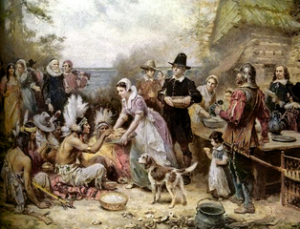Spain’s Popular Party won a historic conservative victory in Sunday’s election and the ruling Socialists suffered their worst defeat in 30 years.
While acknowledging that the dismal state of Spain’s economy was a factor in the election, World Congress of Families Managing Director Larry Jacobs noted the significant impact of family issues. “Over the past 8 years of its socialist misrule, the Zapatero government painted a symbolic bulls-eye on the Spanish family and moral virtues – liberalizing and promoting divorce, instituting same-sex marriage and adoption, creating easy access to abortion, lowering the age of consent, eliminating parent’s rights, and mandating pro-homosexual education in the schools.”
This led to massive demonstrations, especially on the life issue. Just this year, on March 27, 2011, more than 150,000 people marched through the streets of Madrid to protest Zapatero’s abortion law, which allows abortion on demand up to the 14th week of gestation, up to 22 weeks in cases of rape, fetal abnormality and risk to the mother’s health, and up until the moment of birth if the unborn child has a serious or incurable illness, as determined by a committee.
In a February interview with the newspaper El Mundo, Spain’s incoming prime minister, Mariano Rajoy, promised that if his Popular Party constituted the next government, it would repeal the new measure and return to the previous law – which allowed abortion only in cases of rape, fetal deformity and danger to the mother’s health. Rajoy also pledged repeal of Spain’s controversial “Education for Citizenship and Human Rights Program” which indoctrinates students in the worldview of homosexual activists.
Spain will be the site of World Congress of Families VI, at Madrid’s Palacio de Congresos, May 25-27, 2012. Themes will include: The Case for Marriage, Strengthening the Family (including fatherhood and motherhood), The Culture of Life Versus the Culture of Death (including abortion and euthanasia), Demographic Winter, Sexual Revolution and the Family (divorce, co-habitation and pornography), Freedom of Religion, Freedom of Education (parent’s rights), Engaging the Culture (including the impact of the news and entertainment media on the family), The Homosexual Lobby and International Family Law and Policy (UN, EU, and other international bodies).
The organizing committee for World Congress of Families VI is spearheaded by WCF Partner HazteOir.org, and its president and founder, Ignacio Arsuaga, who also helped to organize the pro-life demonstrations in Madrid and over 80 other Spanish cities last March. Arsuaga is the co-author with M. Vidal Santos of a book detailing the anti-family policies of the Zapatero government, “The Zapatero Project: Chronicle of an Attack on Society.” Go to http://proyectozapatero.org to read a copy of the book in English.
“It’s been eight years in which we lived with attacks aimed at destroying our society. Imposition, prohibition, manipulation and indoctrination have been the characteristics of the last two [Zapatero-led] legislatures. That is why we celebrate this newest election, “said Ignacio.
Jacobs added, “We hope the revolution which started in Madrid on Sunday will spread to other Western European nations. Their economic woes are rooted in anti-family policies, resulting in some of the lowest birthrates in history. World Congress of Families VI in Madrid (May 25-27, 2012) will map strategies for a renaissance of the natural family and help educate the new leaders in Spain and throughout the world.”

 [Xenia, OH] – The Greene County Safe Communities Coalition is reminding highway travelers this Thanksgiving that the only belt that should be leftunbuckled this year, or any year, is the one holding up your trousers–not the seat belts in your car.
[Xenia, OH] – The Greene County Safe Communities Coalition is reminding highway travelers this Thanksgiving that the only belt that should be leftunbuckled this year, or any year, is the one holding up your trousers–not the seat belts in your car. The American Thanksgiving tradition is a religious tradition. It rooted the survival stories of our Puritan ancestors. The journals of both William Bradford and Edward Winslow are important sources of that narrative. It is in those two literary sources that the Thanksgiving tradition is discovered.
The American Thanksgiving tradition is a religious tradition. It rooted the survival stories of our Puritan ancestors. The journals of both William Bradford and Edward Winslow are important sources of that narrative. It is in those two literary sources that the Thanksgiving tradition is discovered.